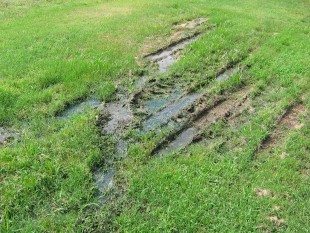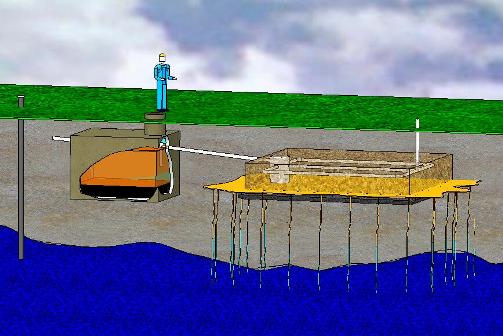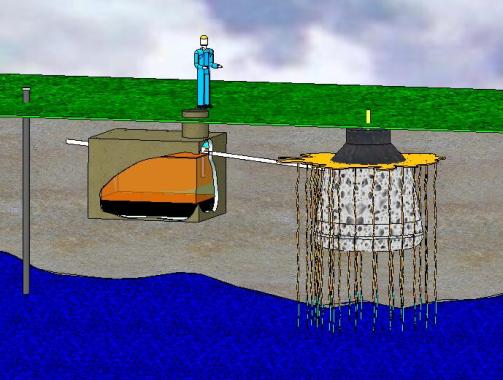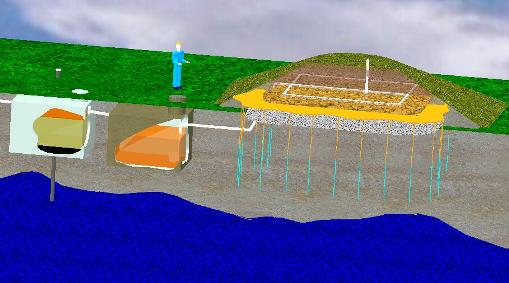Drainfield – Septic System Components – Part II Restore
Drainfield Introduction
The Septic System Owners Manual / Septic System Components: Drainfields – Part II
- Learn about the different types of drainfields such as leach fields, seepage pit, dry well, vertical leach field, drainage field, leach bed, seepage bed, mound.
- Discover that the primary function of all drainfields is to return wastewater to the ground.
- Learn that drainfields are designed to perform a filtering function, cleansing the wastewater before it returns to the water table.
- Learn that the most common cause of septic system failure is the drainfield becoming clogged and impermeable.
- Discover that Aero-Stream can save any type of failed or failing drainfield by executing a controlled aerobic septic system conversion for under $1700!
Many people with septic system problems such as odor, slow draining sinks and tubs, gurgling pipes, backups and sewage water ponding in their yard mistakenly assume the cause of these issues is their septic tank. This, however, is not true.
The most common cause of septic system problems and failure is their septic system absorption component, more commonly known as a drainfield, becoming impermeable so that the wastewater can no longer be absorbed into the soil.

Variations of Drainfield
There are many design variations of drainfields. A drainfield design depends upon many variables such as the size and topographical features of the lot, depth of the water table, soil conditions and types and other criteria. The size of the drainfield can vary infinitely, but most have minimum size requirements based on state and municipal codes.
The designs reviewed in this chapter are:
- Gravity Drainfields
- Pressure Distribution Drainfields
- Cesspool (or Cesspit)
- Drywell (or Seepage Pit)
- Mound Systems
- Holding Tank
- Aerobic Treatment Unit (ATU) & Aeration Systems
Gravity Drainfields:
As implied, gravity drainfields work by allowing the effluent to flow from the septic tank into a series of trenches by gravity. To allow this, the drainfield must be below the outlet level of the septic tank.
A conventional gravity system consists of a network of distribution components laid in gravel filled trenches. The trenches are dug in natural, undisturbed soil typically 3 feet above any natural occurring restrictive layer, such as a hardpan or the seasonal high water table.

The undisturbed soil filters out the remaining solids in the effluent which are then processed by anaerobic bacteria transported from the septic tank in the effluent.The anaerobic biochemical process cleans the effluent before it reaches the groundwater.
Maximum effectiveness of the final treatment occurs when the soil is dry and permeable. The size of the drainfield depends on the estimated daily wastewater flow (generally based on the number of occupants), soil type, and soil conditions.
Pressure Distribution Drainfields:
Drywell (or Seepage Pit):
A drywell is similar in design to a cesspool with an added layer of crushed stone around the outside diameter to increase the absorption area.
The drywell is typically a secondary chamber added in series after the septic tank or cesspool which allows only the clarified effluent from a septic tank or the gray water to enter.

Mound Systems:

Within the sand fill is a gravel bed with a network of perforated distribution components, typically PVC pipes. Septic tank effluent is pumped in controlled intervals through the pipes to insure uniform distribution throughout the bed.
Final treatment of the effluent occurs as it filters through the sand and into the natural soil. Drainage around the mound site is critical if the system is to function properly. On sloping sites the down slope area below the mound must remain protected.
Holding Tank:
Aerobic Treatment Unit (ATU):
An aerobic treatment unit introduces oxygen into any anaerobic septic system, allowing aerobic bacteria to flourish and convert the system from anaerobic to aerobic. The aerobic bacteria are far more efficient, processing up to 90% of the solids in the septic tank versus an anaerobic system which processes only 40% of the solids in the tank and allows 60% to flow to the drainfield, resulting in biomat clogging over time.
Conclusions:
The drywell and mound designs are subject to the same failure mode over time; they eventually become impermeable so that the sewage outflow from your septic tank cannot be absorbed into the ground.
Fortunately, you do not have to replace your drainfield to return your septic system to an operational condition. Aero-Stream® has developed a product and process that will fix and restore any type of failed drainfield.
Learn more about our product and septic systems, in general, by navigating through our website, reading the Septic System Owners Manual, downloading the Septic System Report and calling us toll free.
The Septic System Owners Manual – Drainfield
- The Reality of Your Septic System
- Terminology and Definitions
- Understanding Septic System Costs
- How Does a Septic System Work?
- Septic System Components – Septic Tank
- Septic System Components – Drainfields I
- Septic System Components – Drainfields II
- Septic Tank Problems – How a System Fails
- Resolving Septic System Problems
- Septic System Use and Maintenance Guidelines
Some of the questions we’re asked:
- septic drain field replacement
- leach field failure
- how to restore septic drain field
- septic field repair
- diy drain field replacement
- how long does it take to replace a leach field
- septic tank drain field repair
- drain field repair cost
- can you repair a septic drain field
- drain field failure
- seepage pit vs leach field
- septic tank drainfield problems
- drain fill septic tank
- how to fix septic drainfield
- septic without leach field
- can a leach field be restored
- how to repair a septic drain field
- septic drain field problems
- septic drain field repair products
- septic dry well replacement
- septic field failure
- cost to replace a drain field
- drainfields
- septic pit vs leach field
- can a leach field be repaired
- can a septic drain field be repaired?
- how to fix leach field problems?
- septic field problems?
- vertical leach field
- vertical leach field design
- what happens when a leach field fails?
- cost of drain field repair
- cost to replace septic tank and leach field
- drain field pipe repair
- drainage field kit
- fix leach field problems
- how do you fix a failed septic drain field?
- how to improve septic drain field
- leach bed problems
- leach field issues
- leach field problems water
- leach field repair options
- mound system failure
- new septic drain field
- no drain septic system
- seepage pit problems
- septic bed problems
- septic drain field pipe repair
- septic field issues
- septic lateral line repair
- septic leach field issues
- septic system leach field problems
- septic system repair options
- septic tank field line problems
- septic tank fill line problems
- septic tank leach field failure
- septic tank no drain field
- septic weeping bed problems
